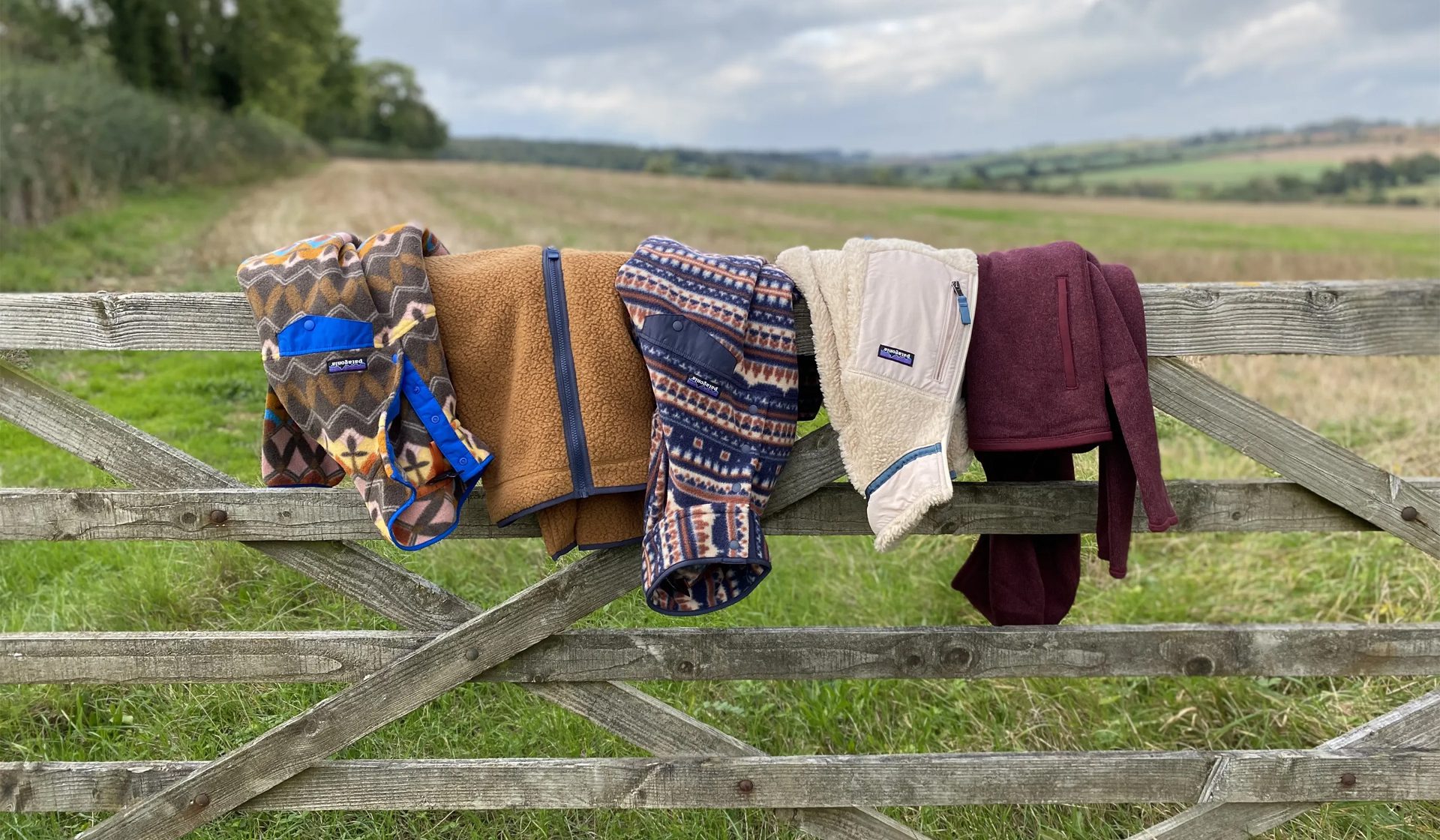Eco-Friendly Fashion: How To Dress More Sustainably
We like dressing well. You like dressing well. That in itself isn’t a problem. We believe it’s a positive thing to take pride in your appearance if it makes you feel good about yourself. With that said, it would be irresponsible to ignore the elephant in the room.
With every passing year, it becomes increasingly apparent that the fashion industry is one of the worst offenders when it comes to harming the planet and accelerating climate change. Clothing factories pump out toxic fumes and chemicals, fast fashion encourages throwaway consumption and synthetic materials pile up in landfill sites, or worse, end up in the ocean.
Does all of this mean you have to stop dressing the way you like? No. But it does mean you should look at making some changes to the way you consume clothing if you want to reduce your environmental impact and go to bed with a clearer conscience. Here are some key tips to help you stay looking sharp without destroying the planet in the process.
Repair
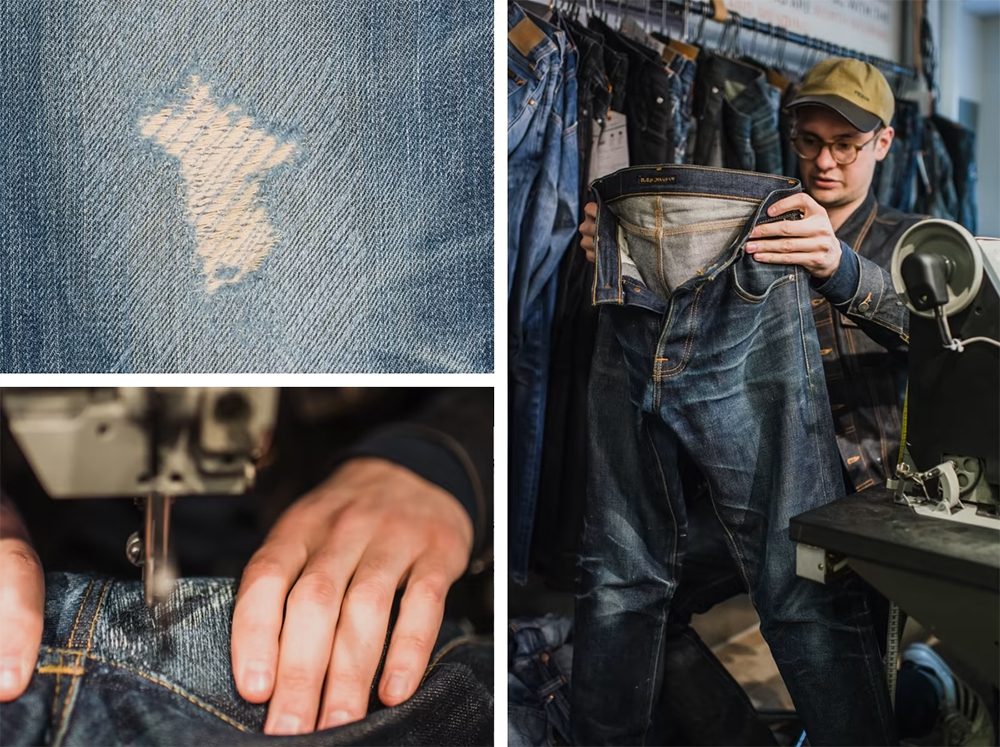
Nudie Jeans offers free repairs for life
Rule number one when it comes to dressing more sustainably is to look after your clothes. This means washing them only when they need it, doing so at a low heat and storing them properly as opposed to just throwing them in a pile on the floor.
If and when your clothes do eventually give up the ghost, don’t run straight out and buy a replacement. Instead, ask yourself “can this be fixed?” And if the answer is yes, take it to your local tailor for a repair so that you can keep wearing it.
Some brands even offer an in-house repairs service for this very reason. The more you repair your clothes, the fewer you’ll have to buy.
Rewear
When you shop for clothes, don’t buy pieces you know will only work with one or two outfits. This is a one-way ticket to overconsumption. A better way to shop is to always opt for the most versatile garment. You’ll get so much more wear out of something you can style with anything and everything than you would out of something more esoteric and trend-led.
It doesn’t mean you have to wear boring clothes, but always think about how a garment fits into your current wardrobe before pulling the proverbial trigger.
Get Thrifty
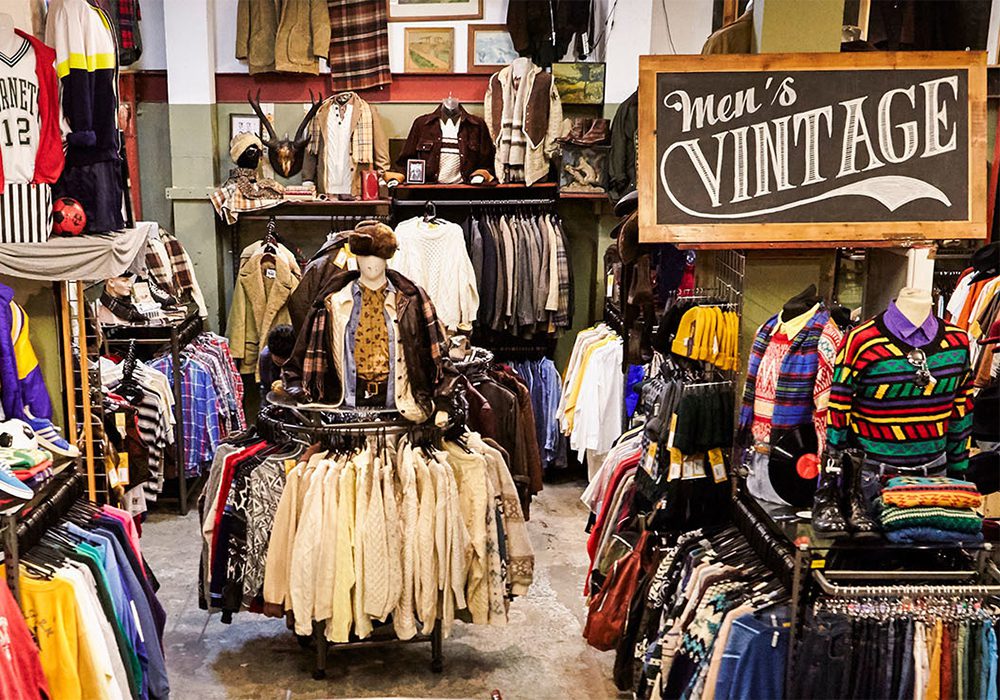
Beyond Retro is one of the biggest UK vintage clothing retailers
Vintage is experiencing a huge boom at the moment as shoppers become more conscious of their consumption habits. It’s a great way to shop as you can wind up with some really unique and interesting pieces without feeding directly into the fashion machine.
The words ‘vintage’ and ‘thrift’ can conjure images of musty, moth-bitten knitwear and crusty old sweaters, but there are lots of options out there for the more fashion-conscious shopper too.
If you like high-end stuff, check out consignment stores. One of our favourites is Markkt, which specialises in pre-worn designer menswear. Expect to find gems from the likes of Engineered Garments, Stone Island, Beams and beyond.
Buy From Responsible Brands
If you must buy new, do your research. Look into brands. Find out about their factories, the materials they use and their repairs policy.
Sometimes buying new is unavoidable, so when you have to do it, make sure it’s from a sustainable brand whose ethics and production practices are as green as possible.
Be Mindful Of Greenwashing
To add to the previous point, look out for ‘greenwashing’. This is when brands make all the right noises at a surface level, but aren’t really doing anything to improve their environmental impact. Putting a little green badge on something or using the word ‘sustainable’ doesn’t mean anything unless it’s backed up by meaningful actions.
To see who’s really putting their money where their mouth is, scour a brand’s website before buying. Those that are committed to improving their standards will have a lot to say about it, and you’ll be able to read about exactly how and why they’re doing so.
Understand The Process
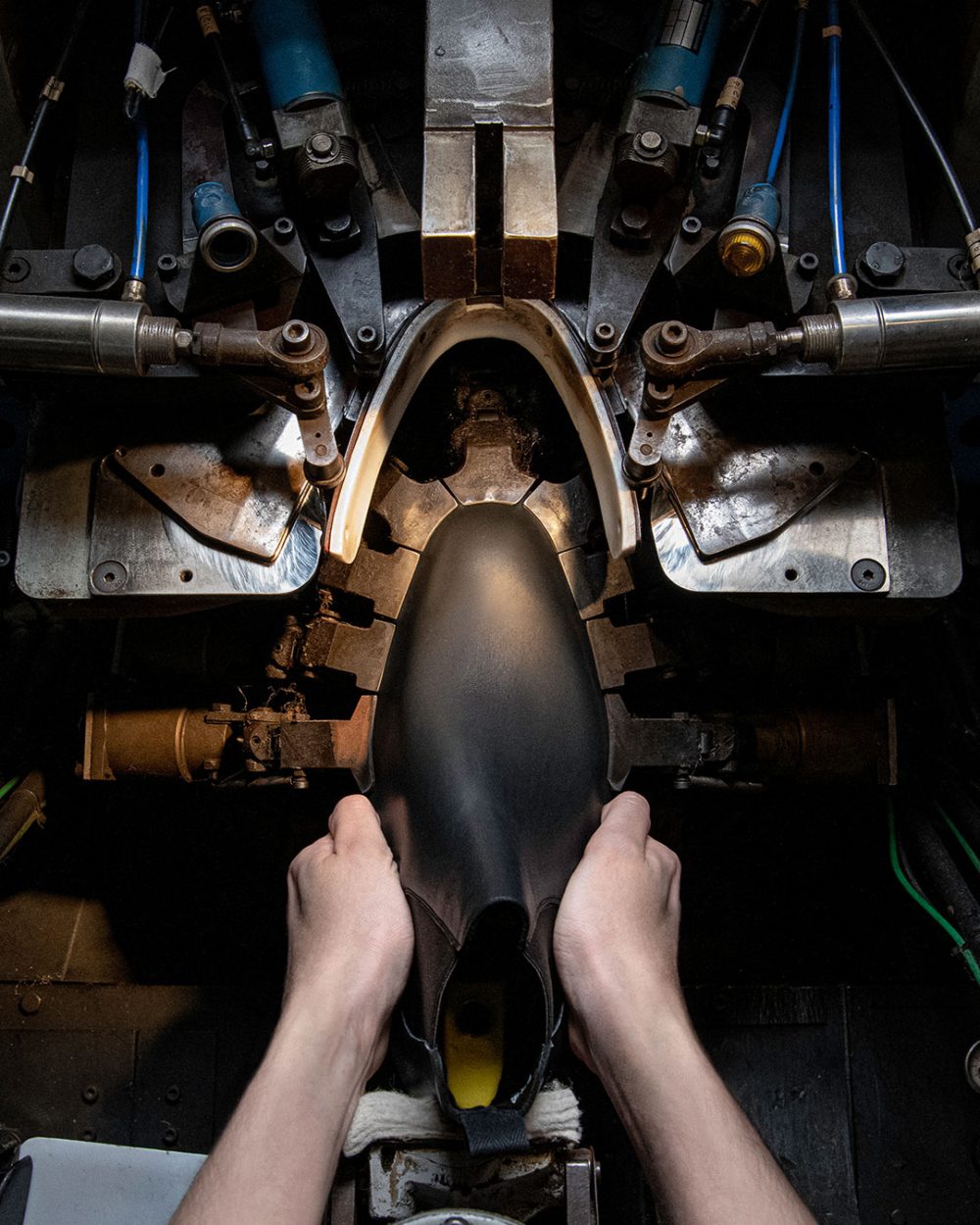
Handmade, Goodyear-welted construction has long been a hallmark of quality shoes that are built to last
Take time to conduct a spot of research on how clothing is made. Having a basic understanding of the production and logistics process will help you to see what the most harmful parts are.
You can then use this knowledge to find brands that focus on improving these aspects of their business.
Have A Uniform
We’ve said it before and we’ll say it again: find what works for you and stick to it. Having a go-to look not only makes getting dressed easier, but it stops you from needlessly spending.
That’s not to say you shouldn’t mix in the odd statement piece to keep things fresh, but having a base selection of staples you can rotate is a great way to strip back your wardrobe to the bare essentials.
Forgo Fast Fashion
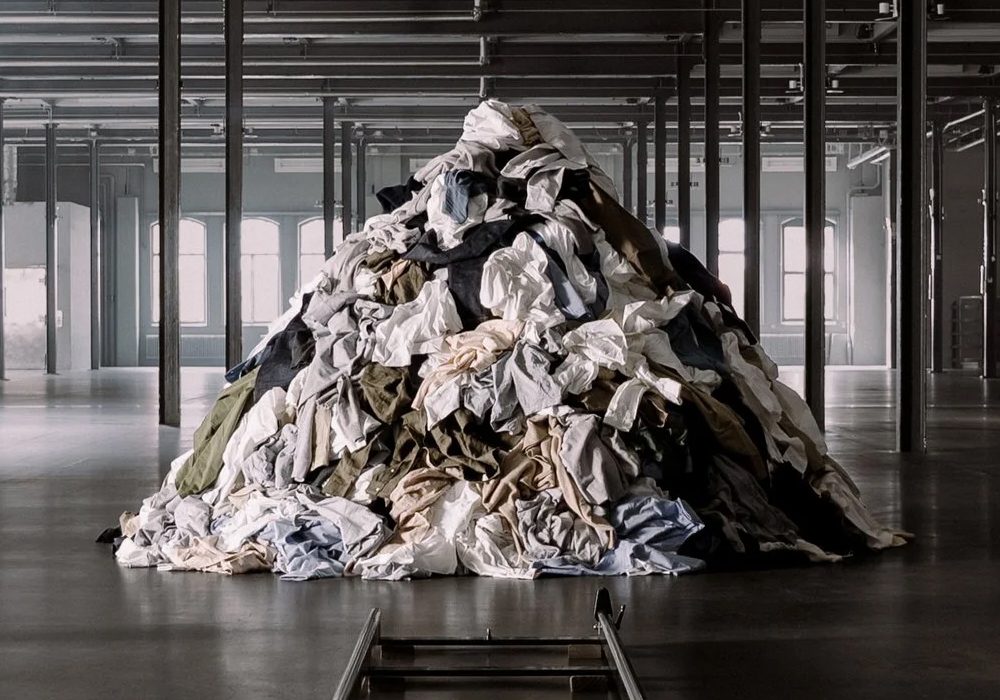
Fast fashion clothes are considered disposable, often ending up in landfill
The temptation to buy cheap clothes is real. Being able to get the latest trends for a bargain price might seem like a no brainer, but in reality it’s a false economy. Invariably, such garments either drop to bits or go out of fashion quickly. From there, it’s into the bin and off to a landfill site.
And that’s before you even take into account how harmful clothing production on this scale is to the planet. If you can, avoid it altogether.
Quality Over Quantity
So, what should you buy instead? We’d always recommend spending a little more to get a better quality garment where possible.
Yes, the initial outlay is higher, but this will pay off in the long run as it’s more likely to last a long time. Buy right and there’s no reason a good piece of outerwear or knitwear can’t last you a lifetime.
Greener Grooming
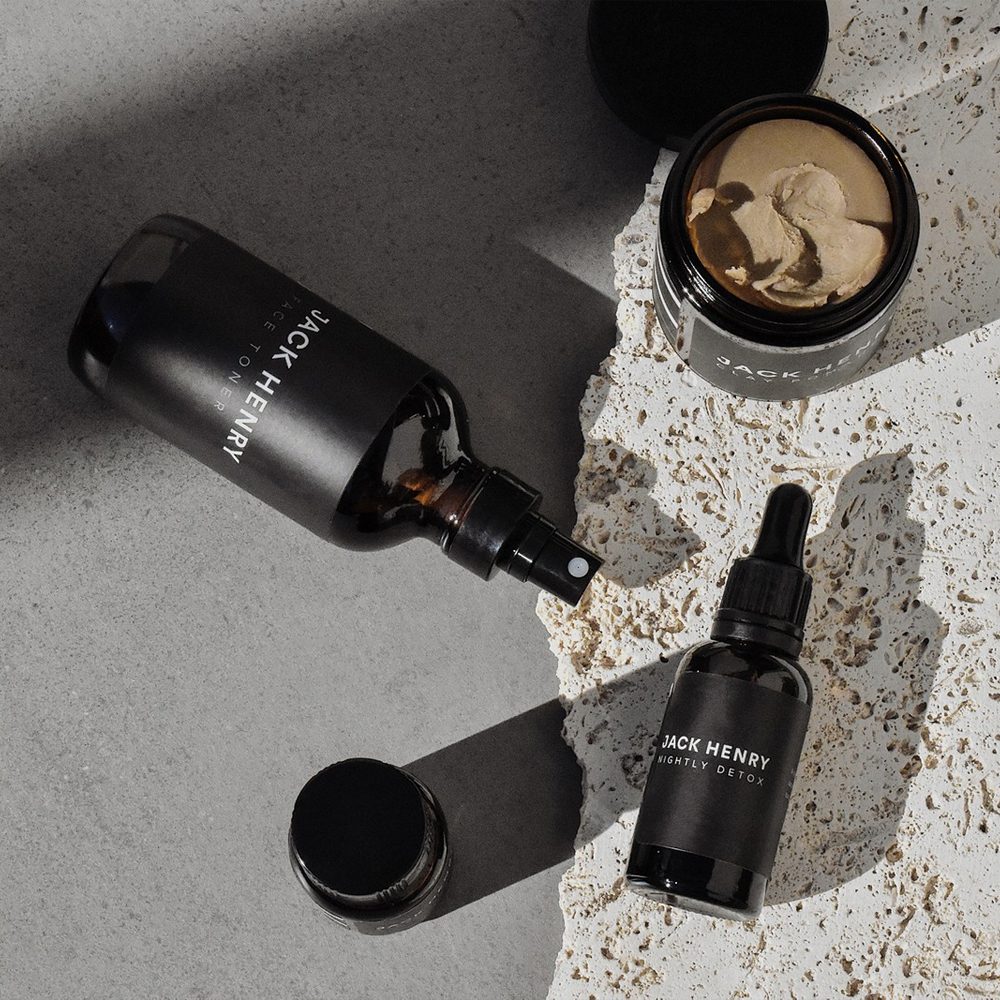
Jack Henry only uses organic ingredients and fully reusable and recyclable amber glass containers
It’s not just the clothes on your back that can be damaging to the environment. Skincare products often use ingredients that are harmful to the planet, so shop about for grooming brands that use natural ingredients and eco-friendly packaging.
Don’t Act On Impulse
Think before you buy. If there’s a garment you want, ask yourself when you’re going to wear it, how it fits into your pre-existing wardrobe and if you’re likely to still be wearing it another five years down the line.
If the answer is no, leave it on the hanger.
